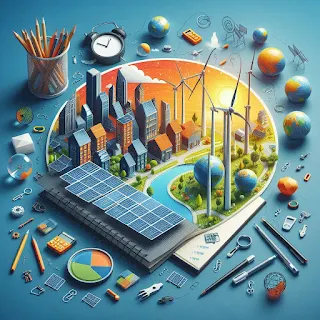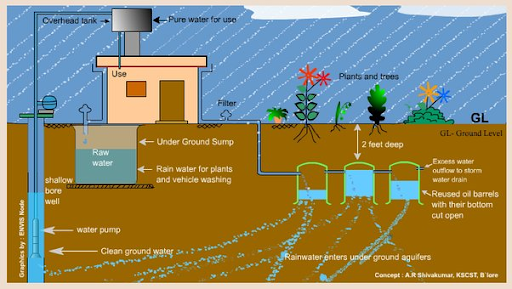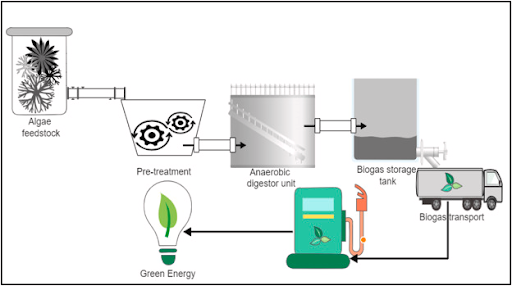In the quest for sustainable energy solutions, revolutionary advancements in renewable energy collection methods are reshaping the global landscape. From harnessing the power of the sun with innovative solar paint to tapping into the rhythmic energy of ocean tides and currents through tidal and wave technologies, the potential for transformative change is immense. Geothermal energy, bioenergy from organic materials, and the towering turbines of wind farms further illustrate the diversity and promise of renewable resources. Coupled with emerging technologies like piezoelectricity and algae biofuels, and the integration of hybrid systems, these top ten renewable energy methods not only offer cleaner alternatives to fossil fuels but also pave the way toward a more sustainable future for generations to come.
1) Collecting the electical energy from ligtening conducting device and energy in local power grids
Capturing electrical energy from lightning presents a tantalizing prospect for supplementing local power grids with bursts of high-voltage electricity. However, harnessing this energy is challenging due to the unpredictable nature and immense power of lightning strikes. Various technologies, such as charge collection devices and grounding systems, are being explored to safely and efficiently capture and store this energy. Integrating lightning energy into local power grids could potentially enhance resilience and reliability, offering a unique source of renewable energy amidst the push towards sustainable and diversified energy portfolios.
2) Collecting solar energy from rooftops, deserts and equitorial regions and storing them countrywise.
Harnessing solar energy from rooftops, deserts, and equatorial regions represents a pivotal strategy in countries' pursuit of sustainable energy independence. Rooftop solar panels offer decentralized power generation, reducing reliance on centralized grids and enhancing resilience against power outages. In deserts and equatorial regions, where sunlight is abundant and intense, large-scale solar farms can be deployed to harness significant amounts of energy. The key challenge lies in effective storage solutions, such as battery technologies, to mitigate the intermittency of solar power and ensure reliable supply even during periods of low sunlight. By systematically integrating solar energy collection and storage solutions on a national scale, countries can transition towards greener energy sources while promoting energy security and environmental sustainability.
3) Generating the electricity from hydro electric power plants at one place and storing them at places on demand
Generating electricity from hydroelectric power plants and strategically storing it for on-demand use presents a robust solution to balancing fluctuating energy demands. Hydroelectric plants harness the gravitational potential energy of water stored in reservoirs or flowing downstream to generate electricity consistently and reliably. By storing excess electricity during times of low demand using pumped hydro storage or other storage technologies like batteries, countries can effectively manage peak loads and grid stability. This approach not only enhances grid flexibility but also maximizes the utilization of renewable energy resources, contributing to sustainable energy practices and reducing dependence on fossil fuels.
4) Installing wind mills at windy places and generating power or electricity and storing them for future use
Installing wind mills in windy locations and utilizing them to generate power is a cornerstone of renewable energy strategy. Wind turbines convert kinetic energy from wind into electricity, offering a clean and sustainable energy source. To address the intermittent nature of wind, advanced energy storage solutions such as batteries or pumped hydro storage can be employed to store excess electricity during periods of high wind production. This stored energy can then be released during calm periods or peak demand times, ensuring a stable and reliable electricity supply. By harnessing wind energy and integrating efficient storage systems, countries can diversify their energy mix, reduce greenhouse gas emissions, and achieve greater energy independence.
5) Collecting rain water from rainy places and storing them for household use in scanty water places
Collecting rainwater from rainy regions and storing it for household use is a sustainable practice that addresses water scarcity in arid or semi-arid areas. Rainwater harvesting systems typically involve capturing rain from rooftops or other catchment surfaces and storing it in tanks or cisterns for later use. This stored water can be used for various domestic purposes such as irrigation, flushing toilets, and even drinking water in some cases, after proper filtration and purification. By reducing dependence on groundwater and municipal water supplies, rainwater harvesting not only conserves water resources but also enhances resilience to droughts and climate variability. It is a simple yet effective way for communities to secure their water supply and promote sustainable water management practices.
6) Building a water vapour condensor machine that operates on free energy for creation of clean drinking water
Developing a water vapor condenser machine powered by free energy sources presents a revolutionary solution for creating clean drinking water in water-scarce regions. This innovative technology utilizes ambient air as a source, extracting moisture and condensing it into liquid water through a process of cooling and condensation. By harnessing renewable energy such as solar or wind power to drive the condensation process, these machines operate sustainably and independently of traditional energy grids. This approach not only provides a reliable source of potable water but also reduces reliance on groundwater and mitigates the environmental impact associated with conventional water extraction methods. As a result, the deployment of such water vapor condenser machines holds great potential to alleviate water shortages and enhance resilience in communities worldwide.
7) Collecting the wave energy from ocean, seas and rivers waves to generate electricity
Collecting wave energy from oceans, seas, and rivers presents a promising avenue for generating electricity through renewable means. Wave energy converters harness the kinetic energy of waves as they move across the water's surface, converting this mechanical energy into electrical power. Various technologies such as point absorbers, oscillating water columns, and attenuators are being developed and deployed to capture wave energy efficiently. Unlike solar and wind power, wave energy is predictable and more consistent, offering a stable source of renewable energy. Implementing wave energy collection systems not only diversifies the energy mix but also contributes to reducing greenhouse gas emissions and promoting sustainable development of coastal regions.
8) Generating peizoelectricty for street ligtening of cities
Generating piezoelectricity for street lighting in cities involves harnessing mechanical pressure or vibrations from pedestrian and vehicular traffic to produce electrical energy. Piezoelectric materials, such as crystals or ceramics, generate an electric charge when subjected to mechanical stress. Integrating piezoelectric elements into sidewalks, roadways, or other urban infrastructure allows cities to capture wasted kinetic energy and convert it into usable electricity. This approach not only enhances energy efficiency but also promotes sustainability by reducing dependency on grid electricity and minimizing environmental impact. Implementing piezoelectric technology for street lighting exemplifies how cities can innovate to meet energy demands while advancing towards more sustainable urban environments.
9) Algae plantation for promotion of biogas production
Algae cultivation holds immense potential for promoting biogas production as a renewable energy source. Algae are highly efficient in converting sunlight and carbon dioxide into biomass through photosynthesis. This biomass can be harvested and processed to produce biogas, primarily methane and carbon dioxide, through anaerobic digestion. Biogas derived from algae can serve as a clean alternative to fossil fuels for electricity generation, heating, and transportation. Moreover, algae cultivation does not compete with food crops for arable land, making it a sustainable option for bioenergy production. By harnessing algae for biogas production, communities can reduce greenhouse gas emissions, enhance energy security, and foster a more sustainable energy future.
10) Collecting more efficient machines with nanoparticles that consumes less electricity
Developing more efficient machines using nanoparticles represents a significant advancement in energy-saving technology. Nanoparticles, due to their small size and unique properties, can enhance the efficiency of various devices and systems. For instance, incorporating nanoparticles into motors, refrigerators, and air conditioners can reduce friction and heat losses, thereby lowering energy consumption. Additionally, nanoparticles can improve the performance of solar panels by enhancing light absorption and electron transport. By integrating nanoparticles into machine components, manufacturers can contribute to significant energy savings across industrial and consumer sectors. This innovation not only reduces electricity consumption but also supports sustainability efforts by minimizing environmental impact and improving overall energy efficiency standards.
























0 Comments